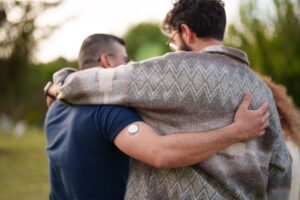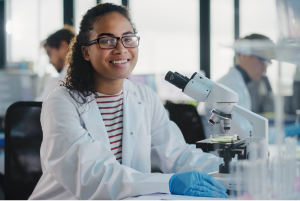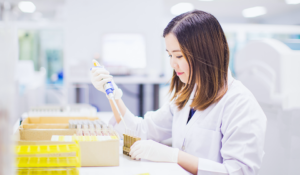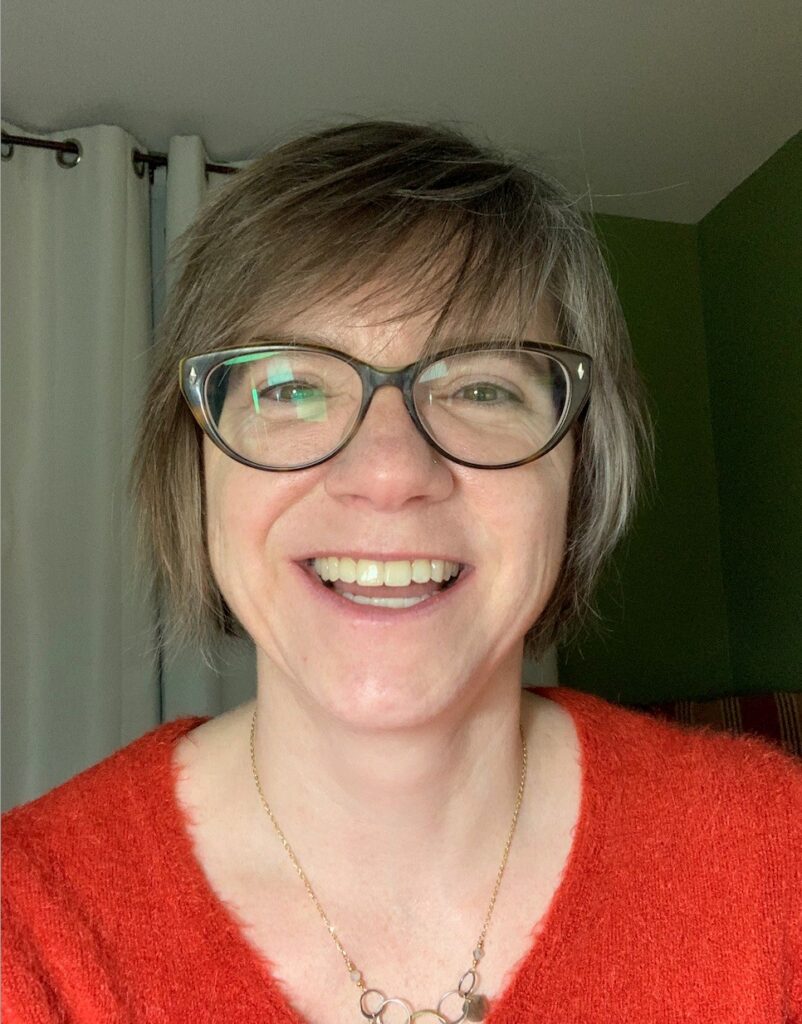
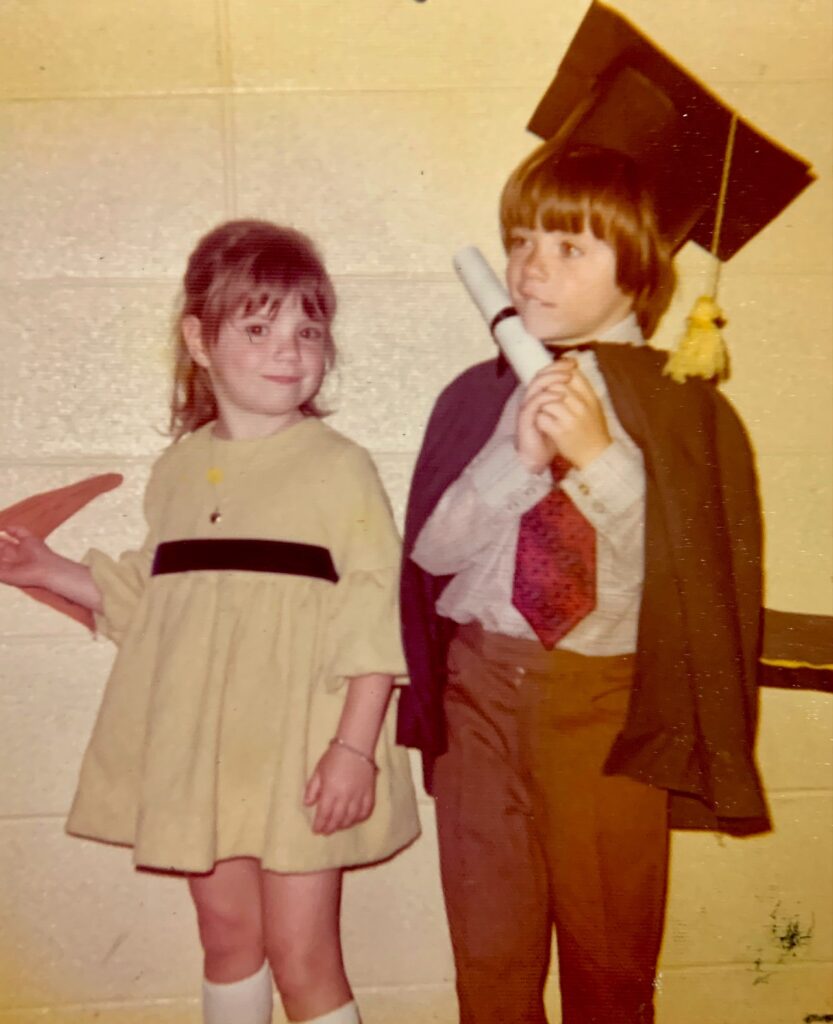
We lived in the Niagara region. My brother who is one year older than me was diagnosed with type 1 diabetes (T1D) at age 4, and one year later, I turned four and I was also diagnosed. It was devastating for my parents to have both kids with T1D. And it was devastating to me because I knew it meant needles.
One of my earliest memories was having cereal with brown sugar with my dad every morning. Suddenly, I had to wait for my mom to wake up and give me the needle, and there was no more cereal with brown sugar and that special time with my dad.
Can you share what T1D management was like 50 years ago?
We did urine testing back then, and that’s how they discovered that I had diabetes. Because the result was positive when I was tested (a tablet turned different colours depending on how much glucose was in your urine). At first it was fun like a science experiment, but soon it became punitive. I always felt afraid of having tests that were high for any amount of time, because there would be scrutiny. I didn’t have an endocrinologist, I went to a pediatrician, and don’t remember ever having blood taken until I was much older and went to a youth diabetes clinic.
When you take one injection of long acting and short acting insulin a day, you have to eat for the insulin. So, you had to eat to (match to the amount of) insulin taken, and your diet was about making sure the insulin to food ratio worked and was keeping your blood glucose down. We followed the CDA (Canadian Diabetes Association) exchange system, so we would have ‘two bread exchanges’ for breakfast as an example. And you couldn’t just eat exchanges when you wanted, but you had to eat them at meal and snack time. It was extremely regimented. I couldn’t eat when I was hungry or conversely had to eat even after I was full, and that created a difficult relationship with food that still persists.
My brother was the [T1D] guinea pig of the family, and a shoutout to my mom who had to figure out how to manage diabetes in a small child. What precautions do you need to take to put him into junior kindergarten, into Cubs, into T-ball? He did a lot of things I either did with him or after him. The path was paved by him and my mom. So, when I came along a year later, in a way, my brother had normalized diabetes in the school, in clubs, on the field and in the neighbourhoood. We did many of the same activities; T1D was just a way of life. We always brought your own snack to activities and decades later, I was flabbergasted when I met someone from that time who remembered that – they had a memory of me eating my own snack! From my perspective, it was just what we did. No big deal.
What innovation or research update has excited you the most as someone living with T1D?
The biggest change, the gamechanger for me was the CGM (continuous glucose monitor). I’m on a pump, and have been for maybe for 12 years, but I would give that up in a day before giving up my CGM. It’s not only the ability to know where my glucose is now, but to know where it’s going. Having those arrows has made a world of difference.
What would a cure be for you?
I would like to get off the diabetes train entirely. I would like to stop having days where no matter what I do, I can’t get my blood glucose down, or up. Food having one impact one day and then it’s different again from one day to another. I don’t want the alarms (CGM alerts about blood glucose being too high or low) repeatedly going off at night.
I know some people have a hard time with injections, but that doesn’t faze me. I think growing up with needles, when I now get a vaccine and they tell me to take a deep breath, I’m just like ‘are you kidding me’. I could take needles for the rest of my life, and it wouldn’t bother me at all. But I am looking forward to going onto new technology, like a tubeless pump controlled by my smartphone.
What is your hope for the future?
I remember as a kid being told a cure was coming, and that it was five years out. And of course, I’ve been living with T1D for over 50 years now. That promised cure never came for me. So, I am pretty resigned to living my life with T1D. I don’t believe that for me personally, that a stem-cell based cure is for me.
But also – I never knew that a CGM was something I could even dream about. When it came to market it was life-changing. So, it’s hard to envision what other life-changing innovations could come next. Fast acting insulin that worked like the body and you didn’t have to wait for it to work, that would be exciting to me. Ultra-fast insulins.
Another innovation that would make a huge difference would be finding ways to better preserve insulins, so you could leave your site in for longer, and there would be no need to refrigerate insulins, less potential to develop lipomas, etc. I believe there is research being done in Australia on this, which is exciting.
What has JDRF meant to you and your family?
My mom was a president of a branch of JDF (JDRF’s previous name), and we would volunteer at the bingo fundraiser. I started volunteering as soon as I was of age (14), at the bingo halls, and have participated in awareness campaigns. I was interviewed for TV and radio about living with diabetes when I was younger. And it was always impressive how much my mom stepped up. I’ve also volunteered at the JDRF Walk for a Cure, been a Peer Mentor (one on one volunteer program) and I find this really rewarding and satisfying. A two-way connection, having a conversation. That’s really lovely.
So, it’s good to keep raising awareness of how JDRF is there for those impacted by T1D. I think sharing our 50th anniversary stories in this way could be good for those who don’t understand what living with T1D is all about and inspiring to other people with T1D.
I’m in relatively good shape for having had T1D for 50 years. As I get older, many of my T1D friends are experiencing a lot of complications, and it’s frightening. And I wouldn’t negate that despite all the progress, this is still a chronic life-threatening disease. It’s so important for research to continue and to make living with this disease easier for the next generation to come, and ideally find a real cure.
